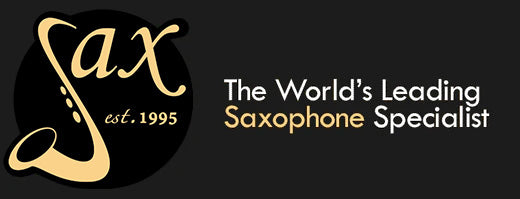CLIP ON MICROPHONES VS LARGE DIAPHRAGM
In a recording situation it is common practice to use a large diaphragm condenser microphone. A question we are regularly asked here at sax.co is; Can I use my wireless clip on microphone for recording purposes, or do I need to buy a “Studio microphone”? The simple answer is you can use both. This blog is going to highlight the advantages of both microphones in a home recording studio environment working “in the box” which is a producers term for using a computer as your workstation.
First off, you are going to need a device called an interface to transfer your audio signal from the microphone into your computer. Condenser microphones rely on Phantom power (48 Volts) in order to pick up the signal, and your audio interface or mixer will have a switch to activate this increased voltage.
We will assume you have set up your signal chain and are successfully recording into your Digital Audio Workstation (DAW)
Large Diaphragm microphones are popular for use in the studio as it is their aim to make the source sound appear bigger, more engaging and full of life. As a result, they will give you that big sound we are used to hearing on records and is worth considering in certain circumstances e.g. this type of microphone might be ideal for someone who is recording a jazz standard with the intention of being the focal point of the mix.
A little technical note which will come in handy if you are really looking to improve capturing your sound. Every microphone has its own unique frequency response.

AKG C3000 MICROPHONE

This is the C3000 frequency response. This graph shows what level the microphone picks up each frequency. If we go along to 2000hz we can see there is a trough at this point of around 3.5db. With these frequencies missing the microphone will help smooth out your sound and help it sit nicely among the other instruments. You may also notice a boost in the higher frequencies, this is going to add back some more brightness and clarity where they had been taken out from the upper mids. This is a common balancing of frequencies.
This microphone also has a low-cut option. This is ideal if you want to roll off some of the lower unwanted bass frequencies which can stop a saxophone sounding ‘woofy’ and also hide household background noise like a running tumble dryer.
AKG C519M MICROPHONE

Next up is the very popular AKG C519M microphone. These microphones are predominantly used for live gigs and stage work as they are conveniently sized, wireless, and sound more focused due to how close the microphone is to the source.
Positioning of this mic is even more crucial than usual, as different ways of mounting to the bell can have a profound effect on how much key noise is picked up. Clipping the microphone to the bottom of the bell leaves the microphone facing your instrument which will more than likely pick up some unwanted key noise. Doing the opposite and clipping it at the top will leave the microphone pointing down to the ground away from the key noise. This will always produce a clearer recording.
As these microphones are brighter than your typical Large Diaphragm Microphone, it could work well for you in a studio environment if you were to be recording a funk or pop solo, or if you are a naturally bright player and want even more cut!

This frequency response chart clearly shows there is no trough at 2000hz and has another boost in the treble, proving it is a brighter microphone. Depending on the player this can have its advantages, I have used these in recording sessions and had excellent results.
Hopefully, you will be able to implement the techniques discussed in this guide on your sax recordings. Please bear in mind, learning to record a saxophone and produce it well does take practice and a lot of experiment. Enjoy the process and always refer to your previous attempts to gauge your progression.



